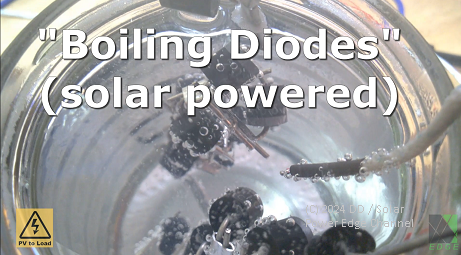There is an MPPT design for heating elements. It doesn't need inductors, just has a capacitor on PV side, uses PWM into resistor to vary power.
That is the simplest and most efficient way to do it.
Connect a relatively large capacitor across the solar voltage source (thousands to tens of thousands of uF recommended).
That will be charged continuously by current from the solar panels.
Allow the combined voltage to rise above the rated maximum power panel voltage (MPP shown on the solar panel ratings plate).
When the upper threshold voltage is reached, connect both the combined solar source and capacitor to the heating element by switching on a mosfet.
The heating element will then discharge the capacitor, pulling the solar voltage down.
Allow the voltage to fall to a lower voltage below the rated peak power voltage.
Turn the mosfet off, allowing the voltage to again rise.
The voltage across both solar panels and capacitor ramps up and down between two set voltage thresholds.
The system cycles or oscillates at a relatively low frequency. In effect very slow motion pulse width modulation.
These voltage thresholds are set to be either side of the maximum rated power voltage, thus always maintaining the solar voltage fairly close to the maximum peak power point from twilight to full sun.
The heating element resistance should be kept "reasonable" but is not absolutely critical.
It will discharge the capacitor pretty much regardless of the actual resistance.
Power transfer efficiency will remain high over a very wide range of solar, and a reasonable range heating element resistance.
In gloomy conditions, the cycling rate will become very slow, but it will still pulse power into the heating element without overloading the solar panels.
Some kind of transient voltage suppression across the mosfet will be required, quite a few different approaches to that.
An avalanche rated mosfet will work very well (at a low enough repetition rate) so will a fast diode back to the solar capacitor, or even a simple snubber.
If the controller is located fairly close to the heating element there should not be much series inductance there to cause a problem.
If the capacitor is made large, the system will cycle slow enough (in the order of seconds) that any switching losses will be negligible.
While the system is cycling on and off, the capacitor charging current from solar remains constant.
Quite a few of these have been successfully built, and they work amazingly well.
*hint* A standard garden variety 555 timer chip contains two voltage comparators connected to the set and reset inputs of a flip flop.
This can be run in normal astable mode, using the high voltage solar capacitor, and two separate adjustable voltage dividers.
Output of the 555 will need to be inverted to drive the mosfet gate.






